Sushi and sashimi are two of the most popular Japanese dishes around the world. While some people use these terms interchangeably, they are actually two different dishes with distinct characteristics. Understanding the differences between sushi and sashimi can help you appreciate each dish better and order more confidently the next time you visit a Japanese restaurant.
Sushi is a Japanese dish that consists of vinegared rice, various fillings like vegetables or seafood, and seaweed. Sashimi, on the other hand, refers to how the food is served, and the dish primarily consists of fresh and raw fish sliced into thin pieces and served alongside a dipping soy sauce. Sashimi doesn’t contain rice. Sashimi is usually raw sliced seafood, although occasionally it can be made out of other meat, like slices of raw beef or horse. Understanding the differences between these two dishes can help you make more informed choices and appreciate each dish’s unique flavor and texture.
Key Takeaways
- Sushi and sashimi are two different dishes with distinct characteristics.
- Sushi is made of vinegared rice, various fillings, and seaweed, while sashimi is primarily fresh and raw fish served alongside dipping soy sauce.
- Understanding the differences between sushi and sashimi can help you appreciate each dish better and make more informed choices.
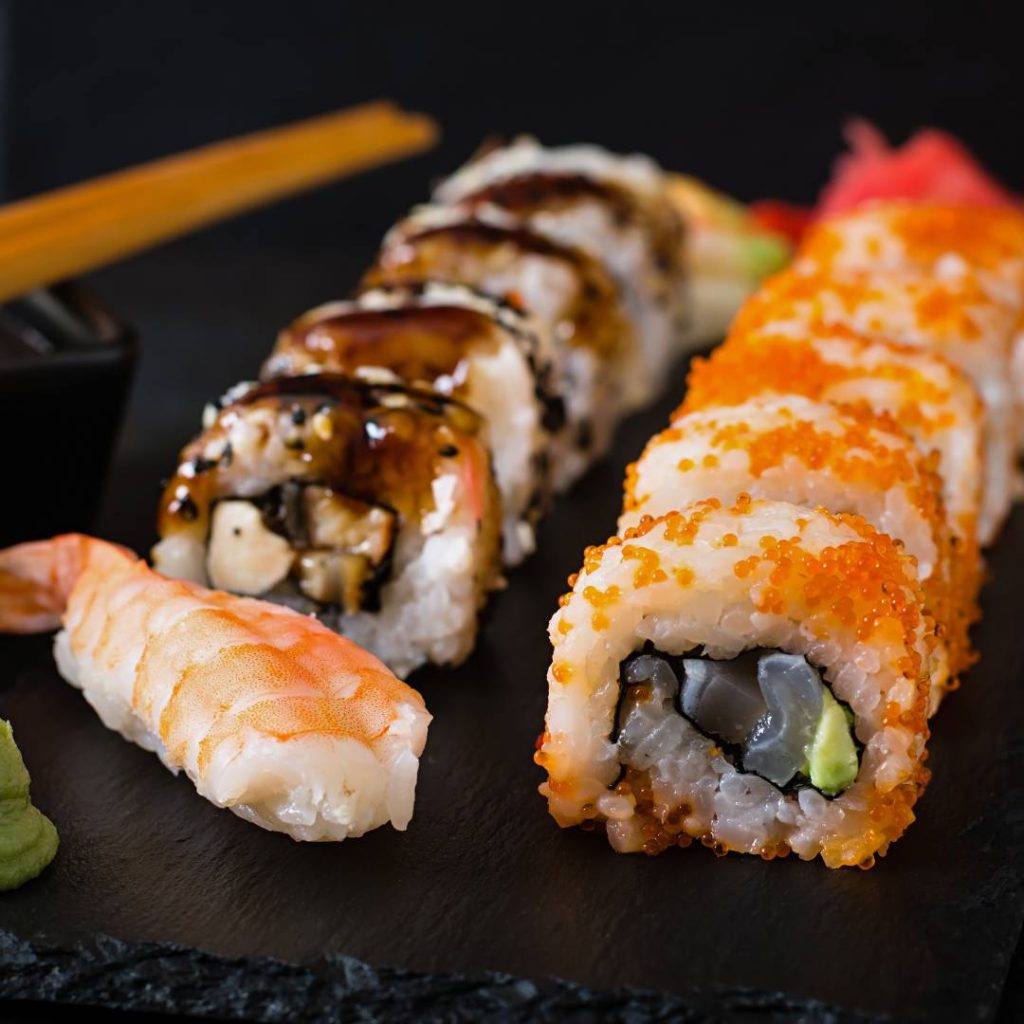
Understanding Sushi
Sushi is a popular Japanese dish that has become famous all over the world. It is a dish that consists of vinegared rice, seafood, vegetables, and sometimes fruits. Sushi is often served with soy sauce, wasabi, and pickled ginger. There are different types of sushi, each with its unique preparation method and ingredients. Here are some of the most common types of sushi:
Sushi Rice
Sushi rice is a short-grain rice that is cooked with vinegar, sugar, and salt. The vinegar gives the rice its distinct flavor and helps it stick together. The ratio of vinegar to rice is crucial in making sushi rice. The rice should be slightly sticky but not too wet. Sushi rice is the base for most sushi dishes.
Nigiri
Nigiri is a type of sushi that consists of a small ball of sushi rice topped with a slice of raw fish. The fish is usually lightly seasoned with soy sauce or wasabi. Nigiri is often served with a small piece of nori (dried seaweed) wrapped around the rice to hold it together.
Maki
Maki is a type of sushi that is made by rolling sushi rice and various fillings in a sheet of nori. The fillings can be anything from raw fish to cooked vegetables. Maki is usually cut into bite-sized pieces and served with soy sauce and wasabi.
Uramaki
Uramaki is a type of sushi that is also known as an inside-out roll. The sushi rice is on the outside of the roll, and the nori is on the inside. Uramaki is often filled with a variety of ingredients, including avocado, cucumber, and crab meat.
Temaki
Temaki is a type of sushi that is also known as a hand roll. It is made by filling a cone-shaped piece of nori with sushi rice and various fillings. Temaki is often eaten with the hands and is a popular sushi dish to eat on the go.
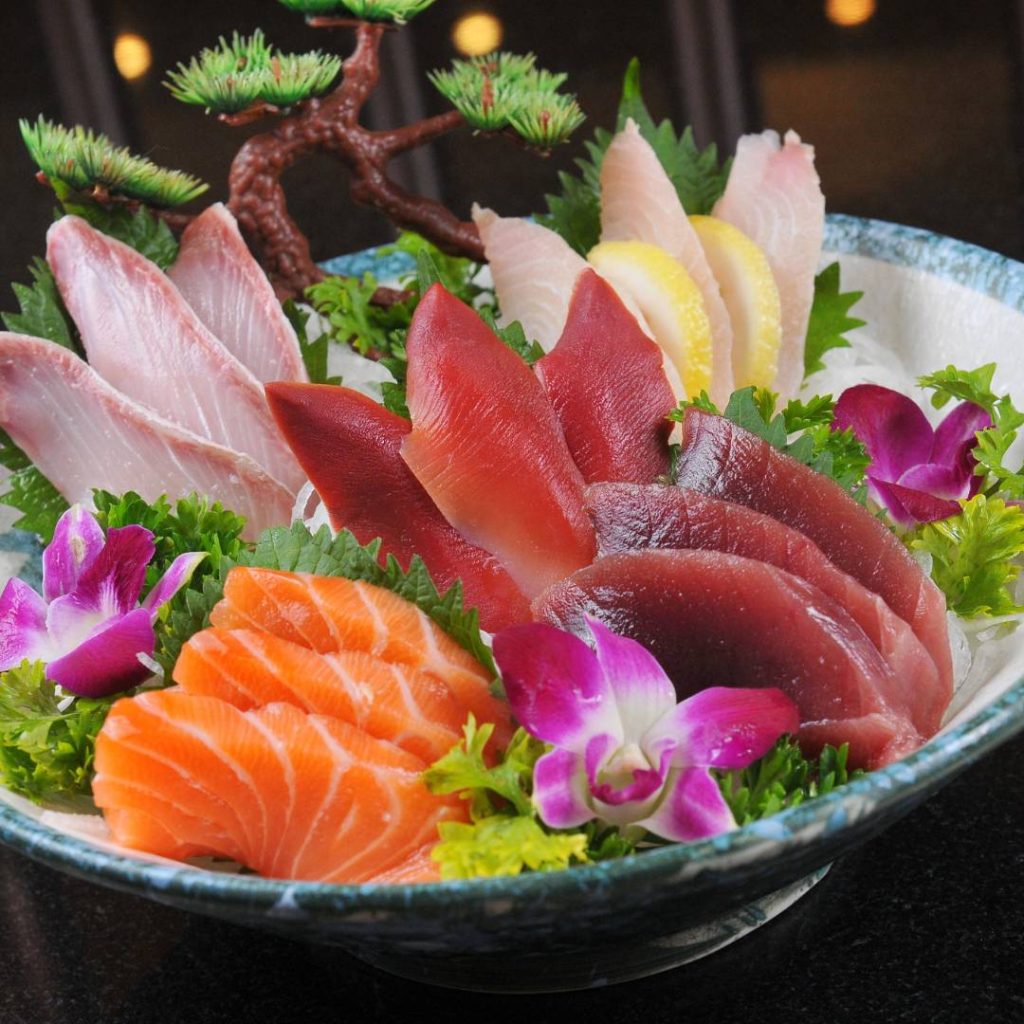
Understanding Sashimi
Sashimi is a Japanese delicacy that consists of thinly sliced raw seafood. Unlike sushi, which is made with vinegared rice, sashimi is served without rice or other accompaniments. The focus is on the quality and freshness of the seafood, which is why it is often served with a dipping sauce made of soy sauce and wasabi.
Thinly Sliced Seafood
The most common types of seafood used for sashimi are salmon, tuna, and shrimp. However, other seafood such as scallop, octopus, squid, and mackerel can also be used. It is important to note that the seafood used for sashimi must be fresh and of high quality to ensure its safety for consumption.
When preparing sashimi, the seafood is first cleaned and filleted. It is then sliced into thin pieces using a sharp knife. The thickness of the slices can vary depending on the type of seafood and the preference of the chef. For example, tuna is often sliced thicker than salmon due to its firm texture.
One of the most popular types of sashimi is bluefin tuna. This type of tuna is highly prized for its rich flavor and buttery texture. However, due to overfishing, it is important to choose sustainable options when consuming bluefin tuna.

Sushi and Sashimi Ingredients
When it comes to sushi and sashimi, there are a few key ingredients that are used to create these popular Japanese dishes. In this section, we will take a closer look at the different protein choices, vegetable options, and sauces and condiments that are commonly used in sushi and sashimi.
Protein Choices
The most common protein used in sushi and sashimi is raw fish. Some popular types of fish used in these dishes include yellowtail, tuna, salmon, and mackerel. Other protein choices for sushi and sashimi include cooked shrimp, crab, and octopus. For those who prefer vegetarian options, tofu and egg omelet are also available.
Vegetable Options
Vegetables are a key component of sushi and sashimi and are used to add flavor, texture, and color to the dishes. Some popular vegetables used in sushi and sashimi include avocado, cucumber, and shiso leaves. Daikon radish is also a common ingredient used in sushi and sashimi, often served as a garnish or accompaniment to the dish.
Sauces and Condiments
There are several sauces and condiments that are commonly used in sushi and sashimi. Soy sauce is a staple condiment that is used to add saltiness to the dish. Wasabi is a spicy paste that is often served with sushi and sashimi, adding a kick of heat to the dish. Pickled ginger is another condiment that is commonly served with sushi and sashimi, providing a sweet and tangy flavor that helps to cleanse the palate between bites.
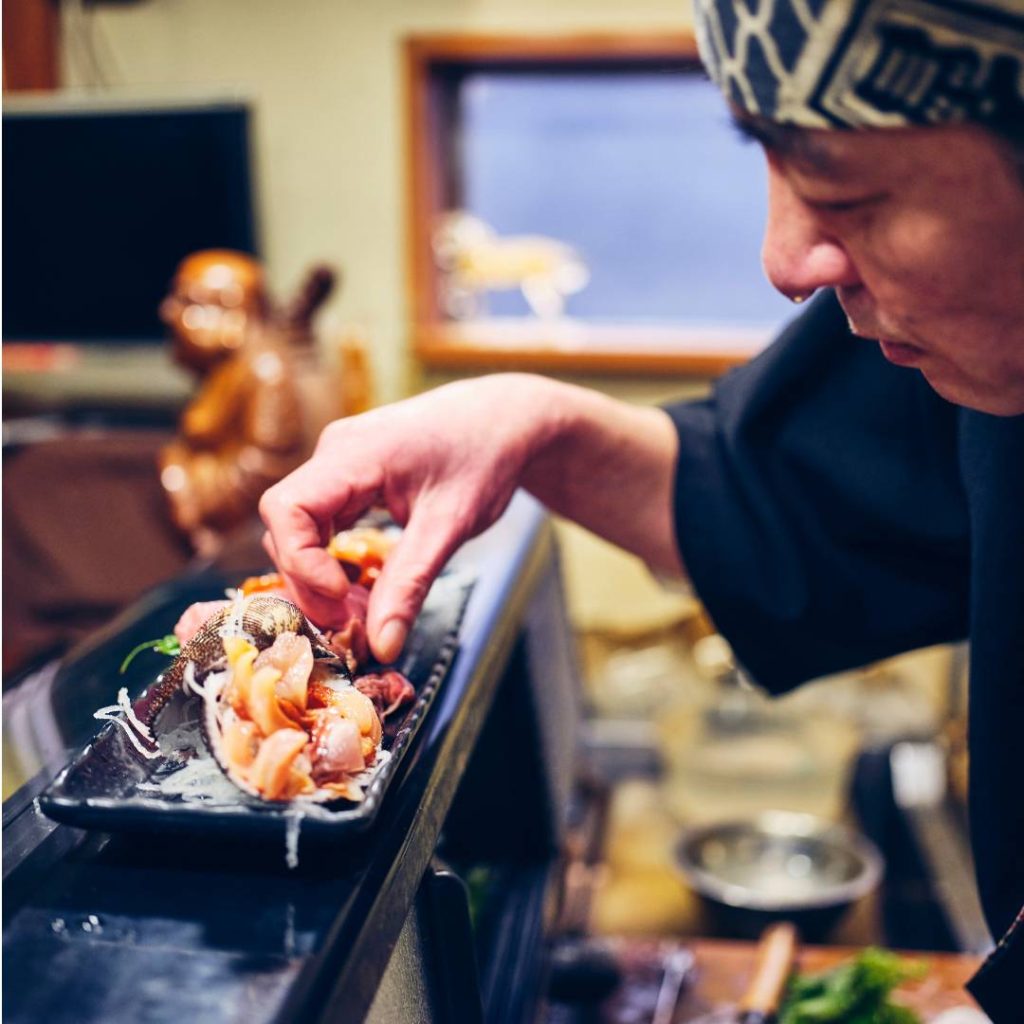
Preparation and Presentation
When it comes to preparation and presentation, there are some key differences between sushi and sashimi. Both dishes require careful handling and preparation to ensure that they are safe and delicious to eat.
Rolling and Cutting
Sushi is typically made by rolling vinegared rice and other ingredients in sheets of seaweed called nori. There are many different types of sushi rolls, including the popular California roll, which contains crab, avocado, and cucumber. Sushi rolls can also contain raw fish, such as tuna or salmon, as well as cooked ingredients like shrimp or eel.
On the other hand, sashimi is made by thinly slicing raw meat or fish and serving it without rice. Sashimi is usually served on a platter with garnishes like daikon radish and shiso leaves.
Serving and Garnishing
Sushi is often served in sushi restaurants on a platter or as individual pieces on a plate. It is typically garnished with wasabi, soy sauce, and pickled ginger. Sushi can also be served as a hand roll, which is a cone-shaped piece of nori filled with rice and other ingredients.
Sashimi, on the other hand, is usually served on a platter with garnishes like daikon radish and shiso leaves. It is typically eaten with soy sauce and wasabi, but it does not usually include pickled ginger.
Both dishes require careful handling and preparation to ensure that they are safe and delicious to eat.
Health and Nutrition
When it comes to health and nutrition, both sushi and sashimi have their own benefits and drawbacks. Let’s take a closer look at the caloric content, protein and fats, and food safety of each.
Caloric Content
Sushi and sashimi vary in their caloric content. Sashimi is generally lower in calories than sushi because it doesn’t contain rice. For example, a serving of salmon sashimi contains around 120 calories, while a salmon roll can contain up to 300 calories or more depending on the size and fillings. If you’re watching your caloric intake, sashimi may be a better option.
Protein and Fats
Both sushi and sashimi are good sources of protein, but sashimi is generally higher in protein than sushi. For example, a serving of tuna sashimi contains around 25 grams of protein, while a tuna roll contains around 13 grams of protein.
Sushi and sashimi also contain different types of fats. Sashimi is generally lower in fat than sushi because it doesn’t contain rice. However, sushi can be a good source of healthy fats, especially if it contains fish like salmon or tuna, which are high in omega-3 fatty acids.
Food Safety
When it comes to food safety, both sushi and sashimi can pose a risk of foodborne illness if not prepared and stored properly. Raw fish can contain harmful bacteria and parasites that can cause illness. It’s important to only consume sushi and sashimi from reputable sources that follow proper food safety practices.
It’s also worth noting that certain types of fish can contain high levels of mercury, which can be harmful to pregnant women and young children. If you’re pregnant or have young children, it’s important to choose fish that are low in mercury, such as salmon or shrimp.
For vegans, there are options for sushi and sashimi that don’t contain fish. These options often contain vegetables like avocado, cucumber, and carrot, and can still be a good source of fiber and other nutrients.
Overall, when it comes to health and nutrition, both sushi and sashimi can be part of a healthy diet as long as they’re consumed in moderation and from reputable sources.
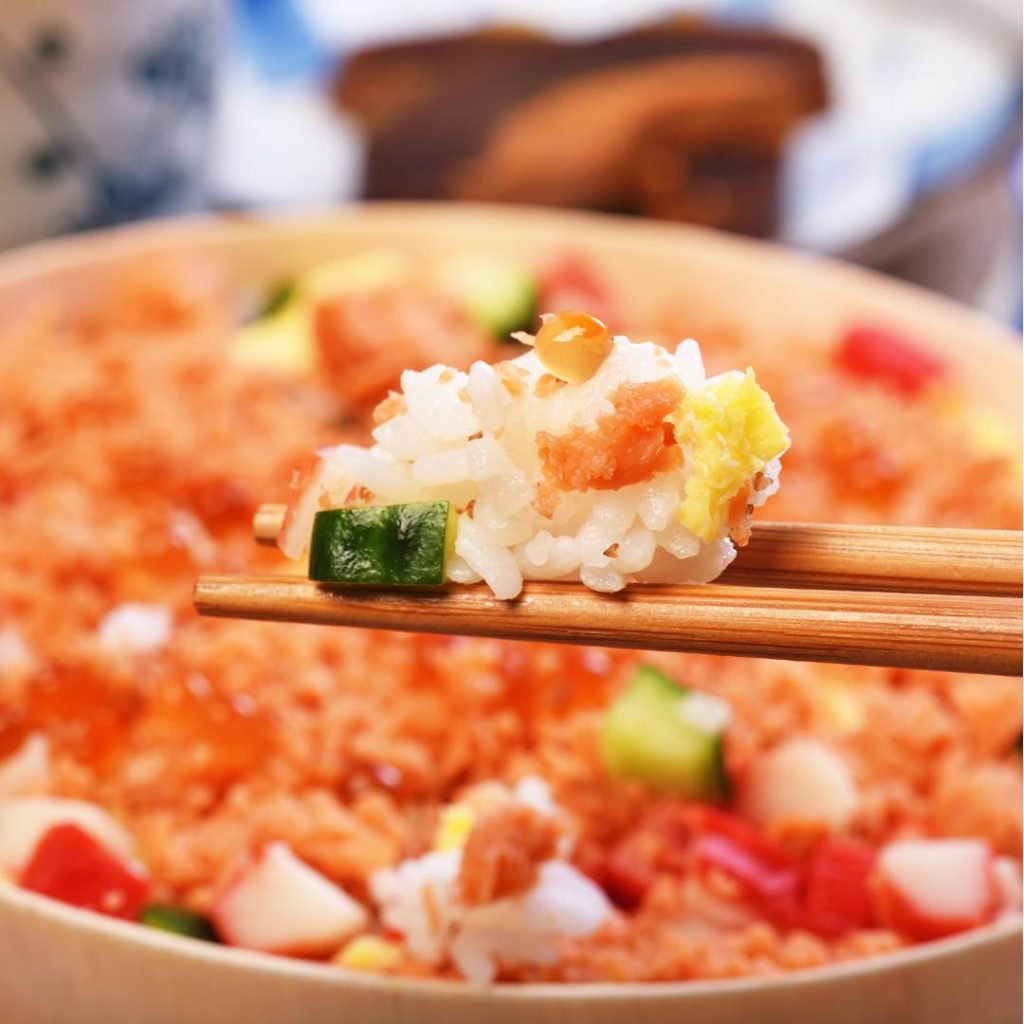
Variety and Versatility
Sushi and sashimi are two Japanese delicacies that are enjoyed worldwide. Both dishes are made with fresh ingredients and are served in bite-size pieces. While sushi is more commonly known, sashimi is also a popular dish that is often served in Japanese restaurants. In this section, we will explore the variety and versatility of sushi and sashimi.
Adaptability to Dietary Preferences
One of the great things about sushi and sashimi is their adaptability to dietary preferences. Vegetarians can enjoy sushi rolls filled with avocado, cucumber, and other vegetables. There are also sushi rolls that are made with cooked seafood, such as shrimp or crab, for those who do not eat raw fish. Sashimi can also be made with cooked seafood, such as scallops or eel, for those who prefer their seafood cooked. Sushi and sashimi can be enjoyed as a main course or as an appetizer.

Konnichiwa! (Hello!) I'm Pat Tokuyama, a Japanese tofu cookbook author, who travels for music, food, and adventure. If you like Japanese tea, checkout some of the newestorganic japanese tea, matcha bowls and noren and more!
** Curious about the Plant Based Japanese Cooking Club? ** Learn more here!
Sushi and Sashimi Across Cultures
Sushi and sashimi have become popular foods in many cultures outside of Japan. In the United States, for example, sushi rolls are often made with mayonnaise, which is not traditionally used in Japanese cuisine. Sushi rolls with roe, or fish eggs, are also common in the United States but are not as popular in Japan. In other countries, sushi and sashimi are often served with fresh ginger, which is believed to cleanse the palate between bites.
In Japan, chirashi is a popular type of sushi that is served in a bowl with vinegar rice and various toppings, such as cooked seafood, chicken, and vegetables. Chirashi is a great option for those who want to enjoy sushi but do not want to eat raw fish.
In conclusion, sushi and sashimi are versatile dishes that can be enjoyed by people with a variety of dietary preferences. While there are similarities between the two dishes, they also have distinct differences. Whether you are a fan of Japanese foods or are new to the cuisine, there is sure to be a sushi or sashimi dish that you will enjoy.


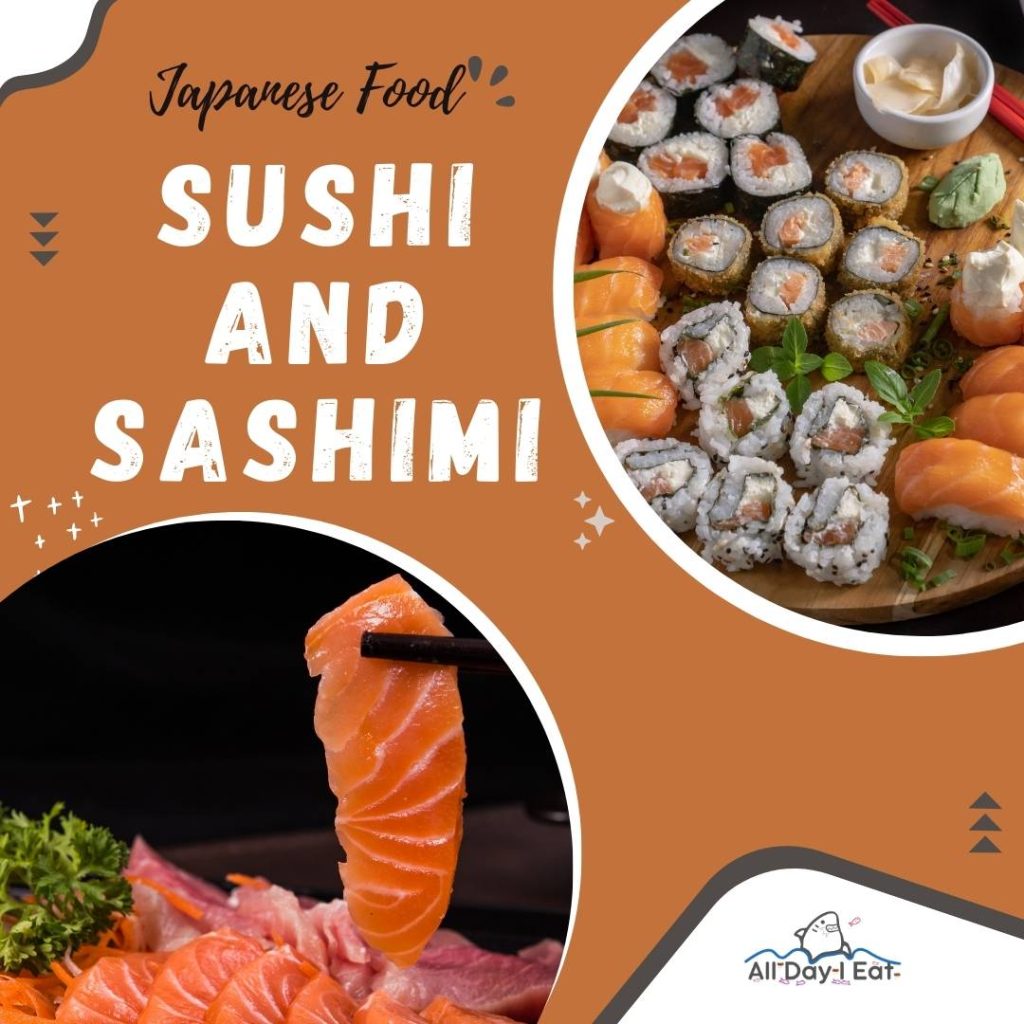








Konnichiwa! (Hello!) I'm Pat Tokuyama, a Japanese tofu cookbook author, who travels for music, food, and adventure. If you like Japanese tea, checkout some of the newestorganic japanese tea, matcha bowls and noren and more!
** Curious about the Plant Based Japanese Cooking Club? ** Learn more here!